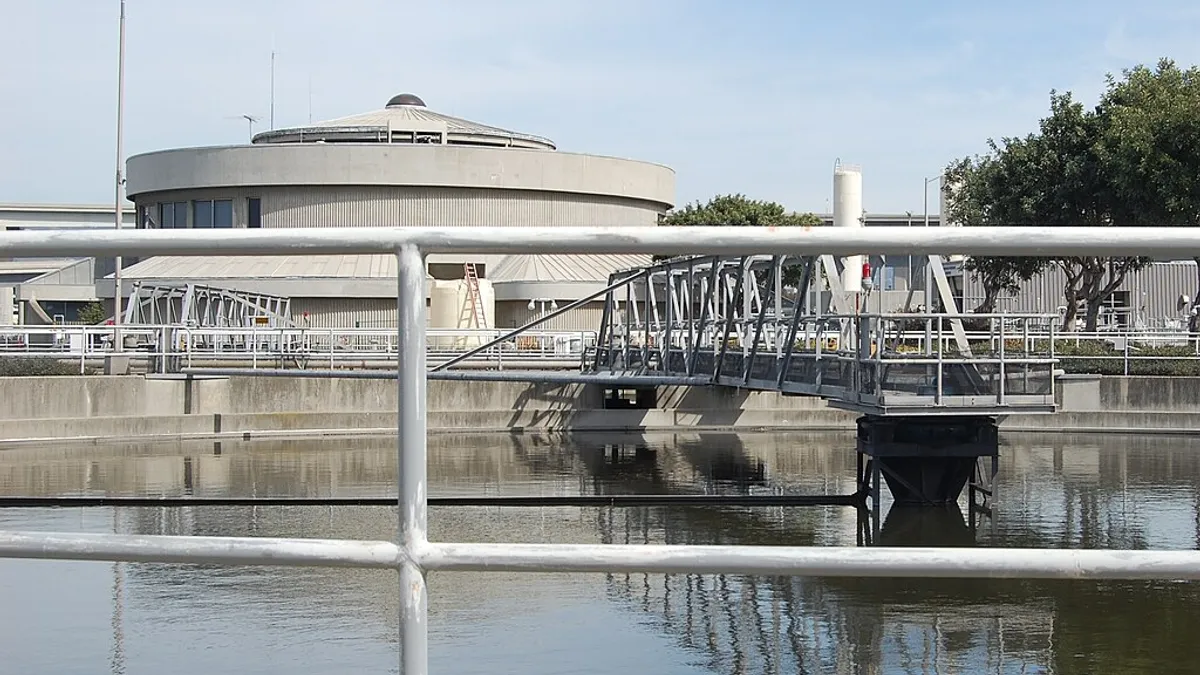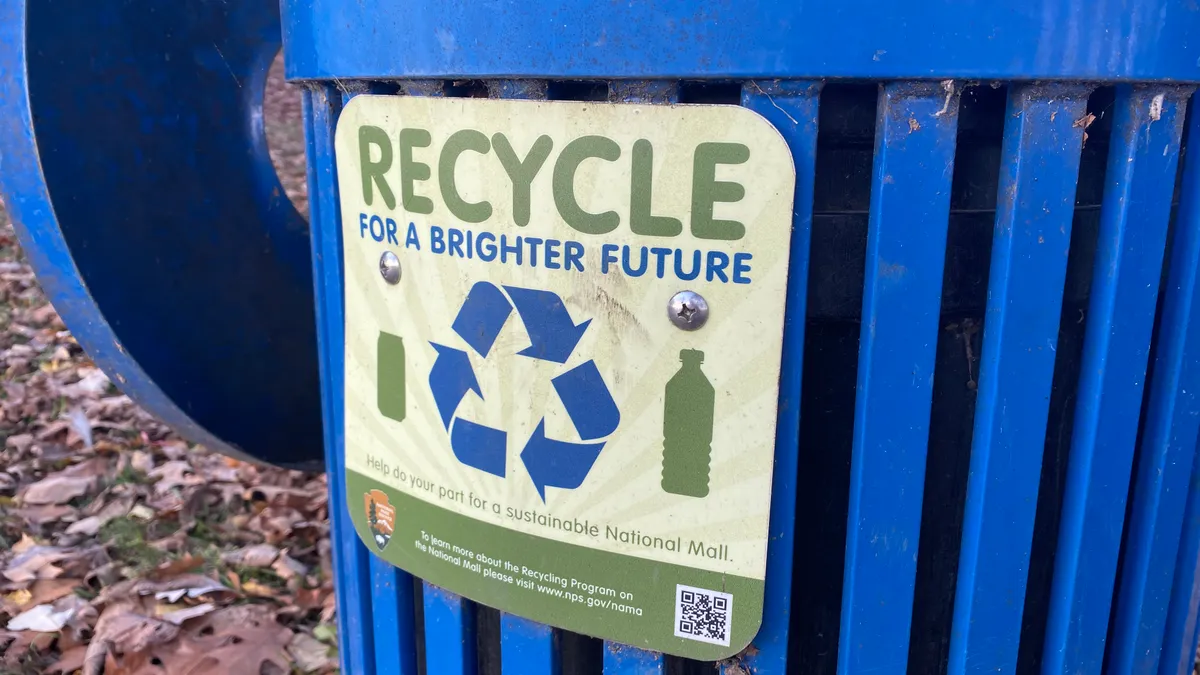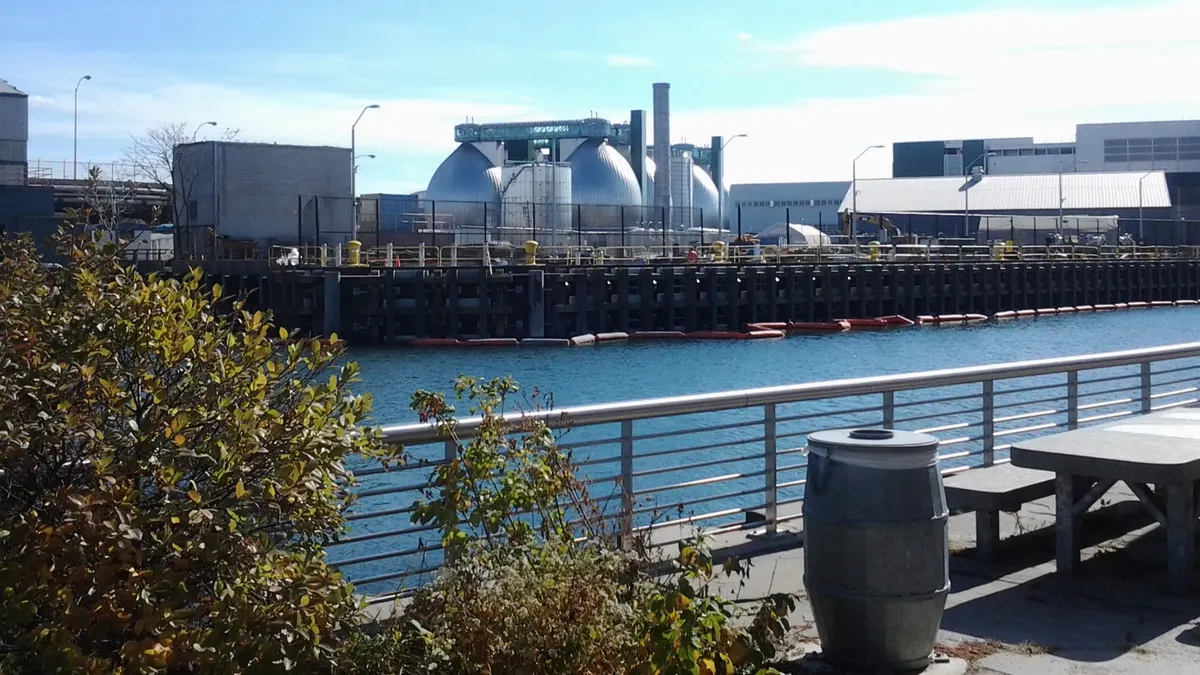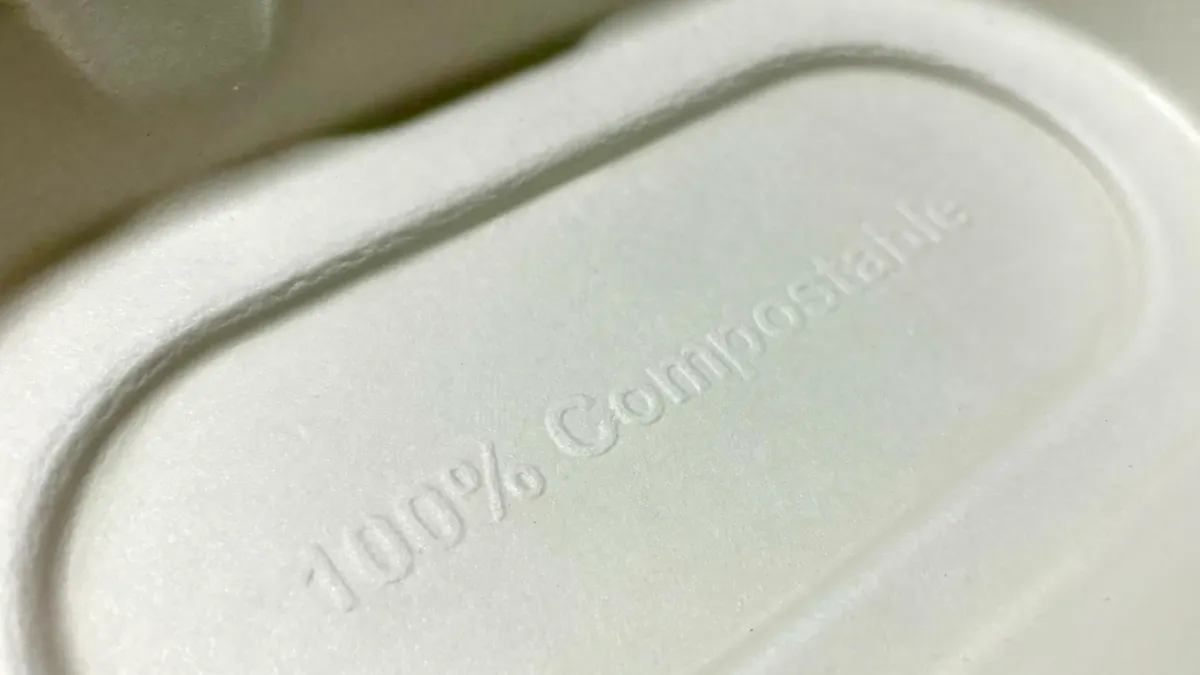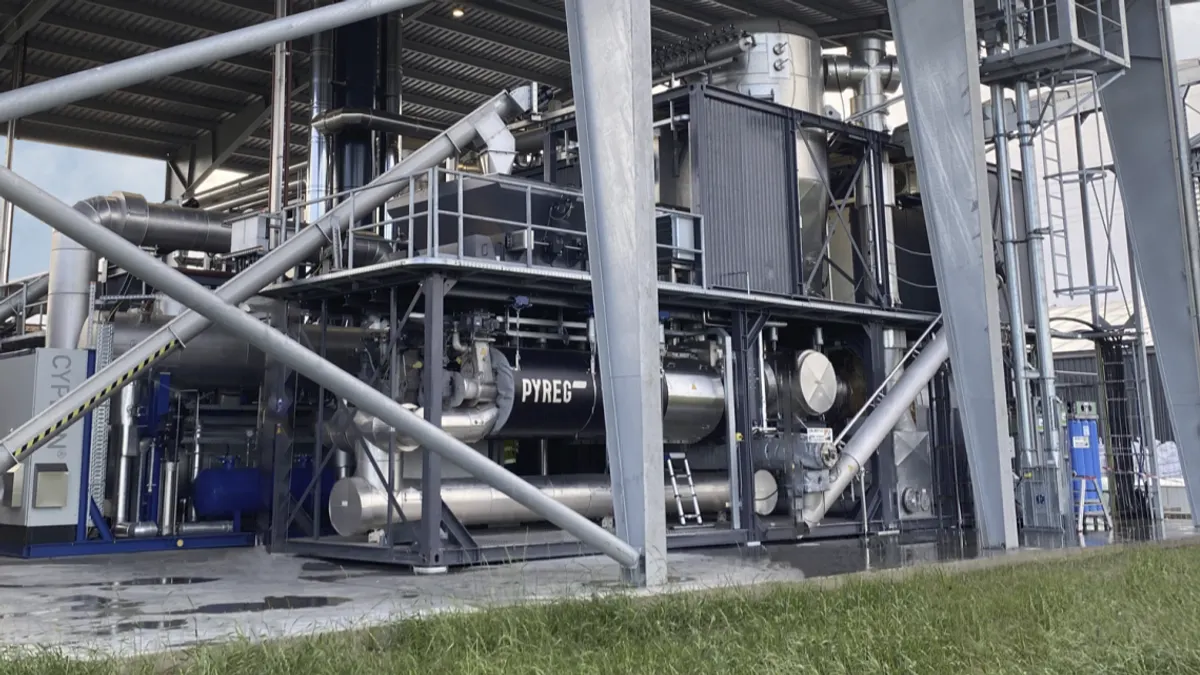The EPA's update to the Renewable Fuel Standards program published Wednesday includes some small tweaks that could have a big impact on anaerobic digesters and the biogas industry, those involved in the industry say.
Wastewater treatment plants operate over a thousand anaerobic digesters in the United States, but just a fraction of them presently codigest food waste alongside the biosolids they process. A change in the way credits are apportioned under the RFS removes the financial disincentive preventing some plants from accepting food waste, opening the door for hundreds more to provide a method of repurposing organic waste.
"Food waste recycling related to biogas has been artificially suppressed by the way the Renewable Fuel Standard has been treating food waste that’s added to farm-based or municipal biogas systems," Patrick Serfass, executive director of the American Biogas Council trade group, said. "I’m really hoping that this transforms food waste recycling."
The RFS update included multiyear targets for the amount of credits that petroleum-based fuel manufacturers and importers must generate or purchase to support the alternative fuel industry. The Renewable Identification Number credits, or RINs, are divided into categories. Those include D5 credits, whose price is loosely tied to gasoline prices, and D3 credits, which are typically set to be $1.50 more expensive than D5 credits.
Previously, anaerobic digesters could generate D3 RINs only if they processed wastewater sludge or manure. Mixing in food waste would demote all the facility's credits to the less lucrative D5 RINs. But in the new EPA rules, digesters can now continue to generate D3 RINs through biogas from wastewater or manure, and further generate D5 credits through any additional biogas produced from accepting and codigesting food waste.
Serfass said the change, which he's been pushing for since 2016, could open up "dozens and dozens of sites" to consider codigestion of food waste.
"All of the projects that are already participating in the RFS can now just generate more biogas and more revenue, not just from the biogas, but from accepting tipping fees without much financial downside to doing so," Serfass said.
Farm-based digesters have been a growing portion of the anaerobic digestion market, spurred by companies like Vanguard Renewables, which is building dozens of new facilities on dairy farms. But the technology has also been used at wastewater treatment plants to manage leftover solids for years.
Out of more than 14,000 wastewater treatment plants nationwide, about 1,286 use anaerobic digestion, according to a 2019 survey by the U.S. Department of Energy. But many of them do not accept food waste. That’s beginning to change, thanks to pilot projects like at New York City’s Newtown Creek treatment plant, which recently celebrated the opening of a partnership with National Grid to inject renewable natural gas into the city’s pipelines.
But even in California, where enforcement of organics diversion mandate SB 1383 has led to the increased generation of source-separated organics, only about eight or nine of the 150 wastewater treatment facilities with anaerobic digesters are accepting food waste on a large scale, said Greg Kester, director of the renewable resources program at the California Association of Sanitation Agencies.
“[The change] will greatly facilitate codigestion and the diversion of food waste away from landfills,” Kester said. “We think this is a great revision.”
Kester said the RFS update, combined with incentives in the Inflation Reduction Act and other federal and state programs, will tip more anaerobic codigestion projects into becoming economically viable. He also expects it will become much more common for existing wastewater treatment facilities to accept food waste, which he says have enough additional capacity to effectively process all of the recoverable food waste currently generated in California.
That could be a welcome boost for companies like Anaergia, whose economic fortunes have been dampened by pandemic-induced delays in the rollout of organics collection. In an emailed statement, Chief Operating Officer Yaniv Scherson said the company was “thrilled” by the changes announced by EPA, saying it “benefits the utilities, the ratepayers, and the community at large.”
“What may seem like a minor adjustment will be monumental in encouraging the use of existing wastewater anaerobic digestion assets to cost-effectively advance organics diversion across the US, which will help reduce methane emissions from landfills,” Scherson said.
There are some obstacles to such implementation, including contamination, which the California Water Board cited as a limiting factor in early codigestion programs at Los Angeles County’s Joint Water Pollution Control Plant and the East Bay Municipal Utility District’s plant in Oakland.
Kester said not every facility can immediately accept food waste either, as some would need to upgrade heating and mixing elements or install additional receiving facilities for the new form of waste coming in. He also urged additional partnership and strategic planning between solid waste companies and the wastewater treatment sector to ensure more effective collection and pre-processing of organic material for digestion.
Serfass also acknowledged there would be challenges and a need for collaboration to take advantage of the RFS update, but he was nevertheless optimistic about its implications.
“It's never quite that simple,” Serfass said. “But that's our hope, that this could be a real game changer for the food waste recycling industry and really open up a sector of the biogas industry whose growth has been suppressed for many, many years.”



